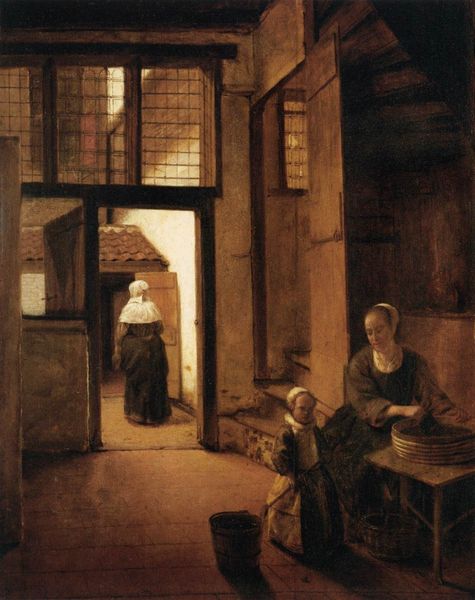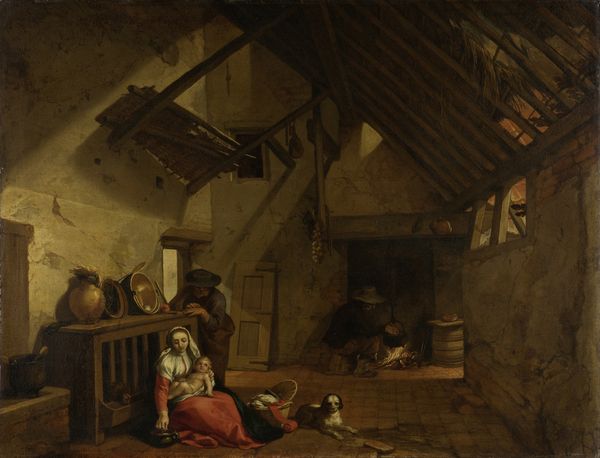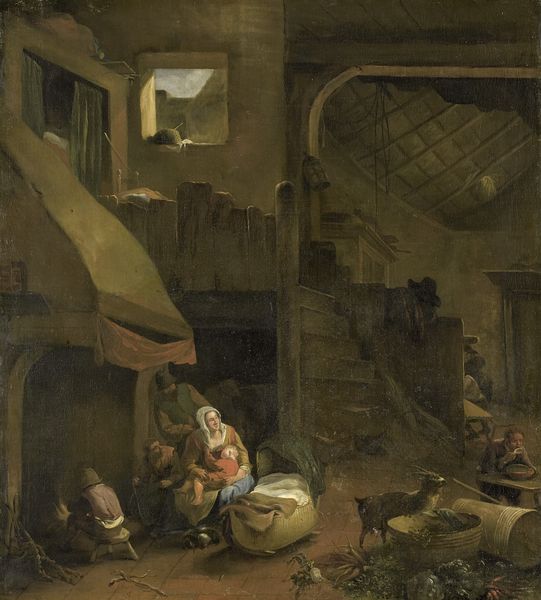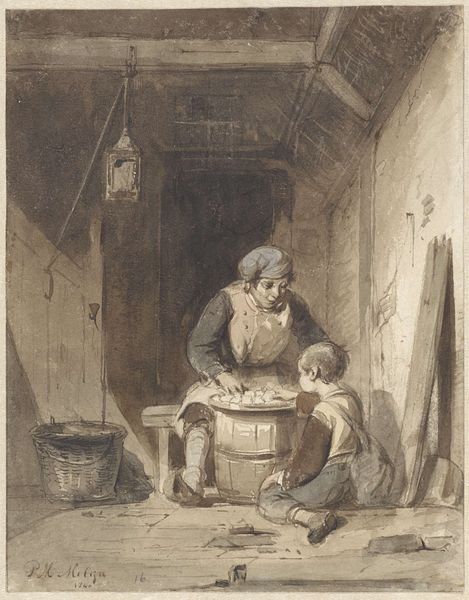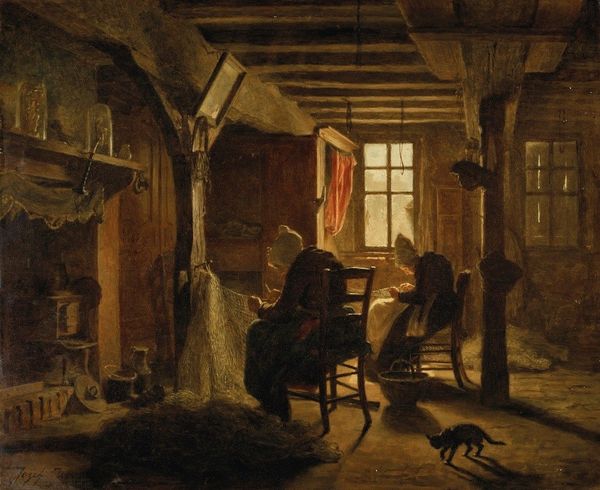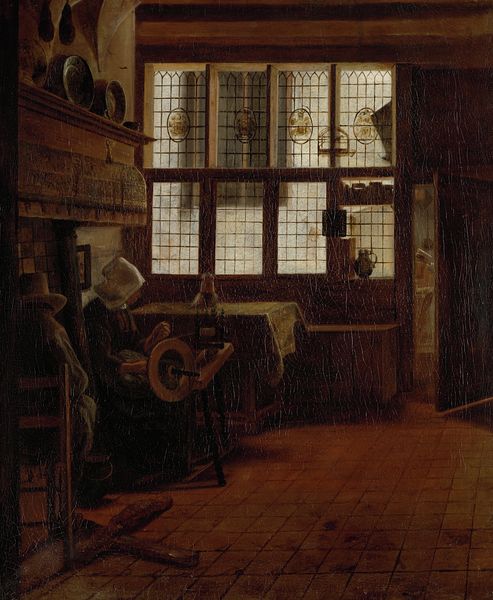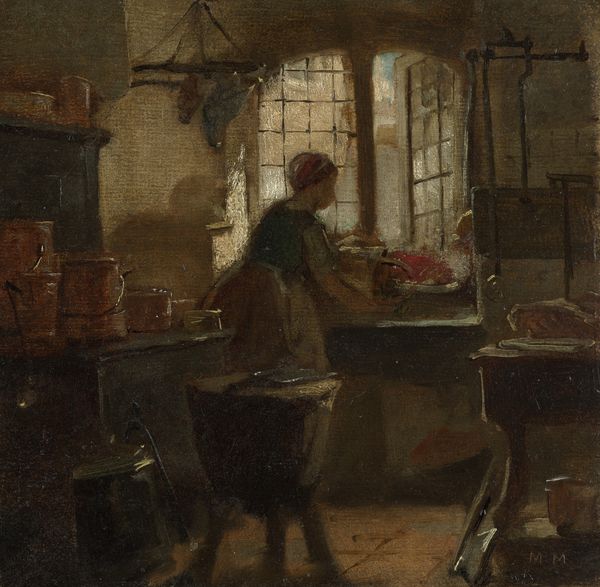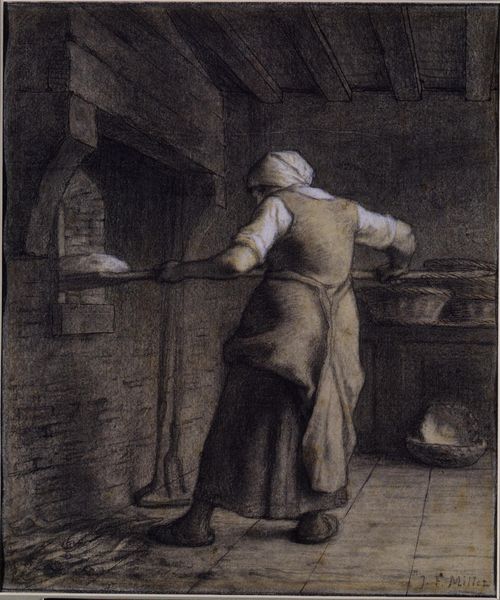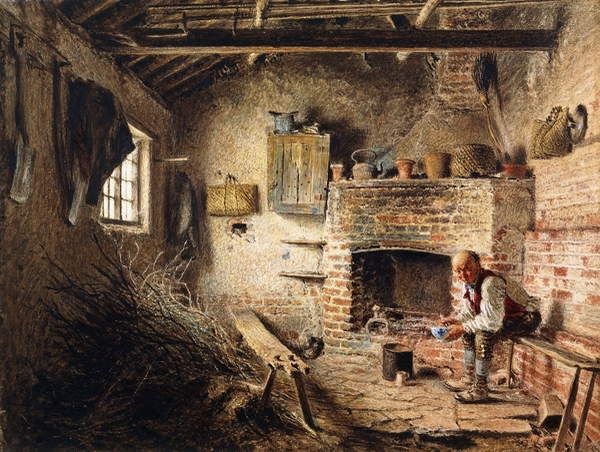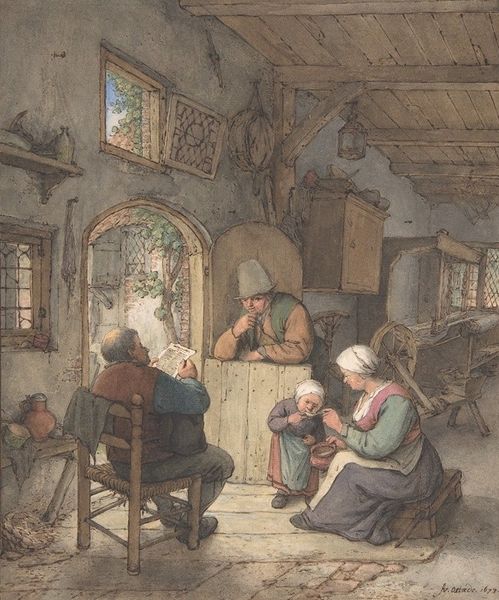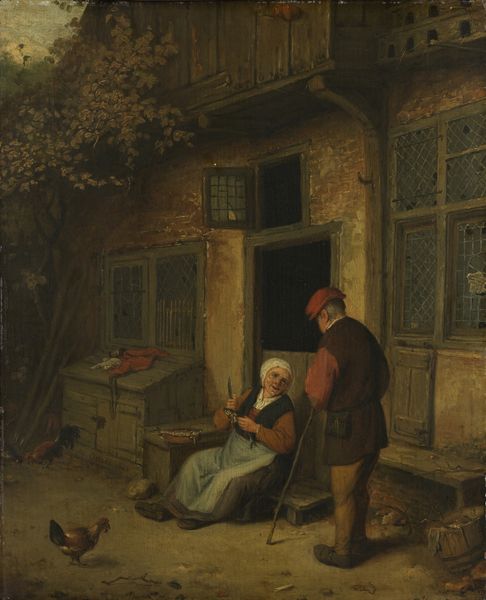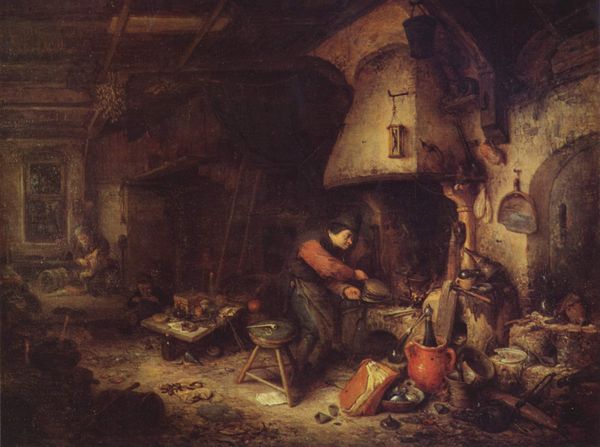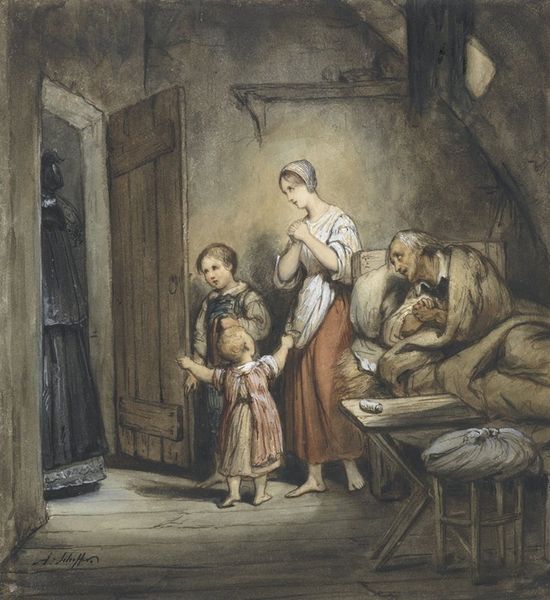
painting, oil-paint, impasto
#
portrait
#
dutch-golden-age
#
painting
#
oil-paint
#
landscape
#
impasto
#
genre-painting
#
realism
Dimensions: height 19.5 cm, width 14 cm, depth 7.8 cm
Copyright: Rijks Museum: Open Domain
Curator: Jacob Maris painted "Small Courtyard" in 1862. This oil on canvas is currently held in the Rijksmuseum. It offers a slice-of-life glimpse into a humble Dutch interior. What strikes you about it? Editor: Immediately? Melancholy. That young girl, standing at the threshold of a darkened doorway. She's holding knitting, but her gaze is so distant, lost somewhere beyond the frame. It's not a bright, cheery scene; it's quiet, almost haunting. Curator: Absolutely. Maris was working within a tradition of Dutch Realism, but he brings his own subdued sensibility. Think about the social context: the Netherlands was undergoing significant transformations in the mid-19th century. Artists like Maris turned away from grand historical narratives and looked toward the everyday lives of ordinary people. Editor: Right. And the light – that’s key. Notice how the bright exterior, filled with maybe not overflowing, but abundant, produce—almost vibrates against the deep shadows inside. It’s as if the sunlight is holding back. Curator: That interplay of light and shadow is masterful. It’s more than just technical skill; it evokes a sense of introspection. It is also indicative of his tonalist approach to landscape and genre scenes, avoiding strong colors in favor of a limited, harmonious range. You also get the sense of layers. Look at that other shadowed figure visible deep within the entryway and how the doorway creates almost a second composition inside the larger scene. Editor: I agree, there's an emotional core that is conveyed almost entirely through color and value. If you took that scene, say, to Disney and brightened and colored everything with saturation it would simply evaporate as an interesting image. So, as you pointed out, it relies so heavily on not what we're seeing, but what is being left to the shadows, to the imagination. Curator: Indeed, the artwork is quiet in many ways. In the girl's introspective stare, in its somber palette. "Small Courtyard" holds so much, just beneath its still, almost brooding, surface. Editor: I concur, which makes it the sort of painting you want to visit and revisit, peeling back the layers slowly, with new surprises to be seen even after many years and, possibly, more shadow than light.
Comments
No comments
Be the first to comment and join the conversation on the ultimate creative platform.
